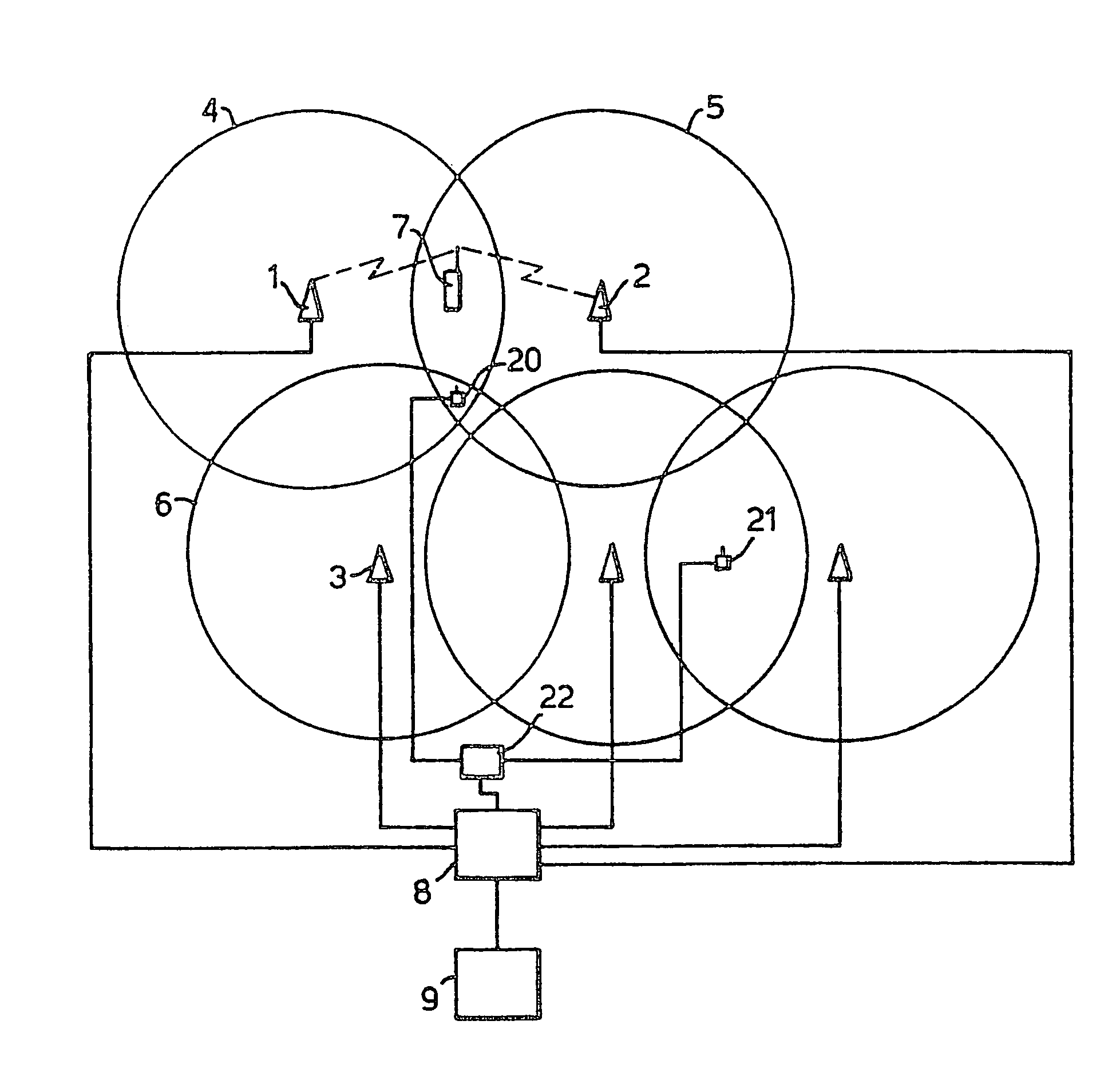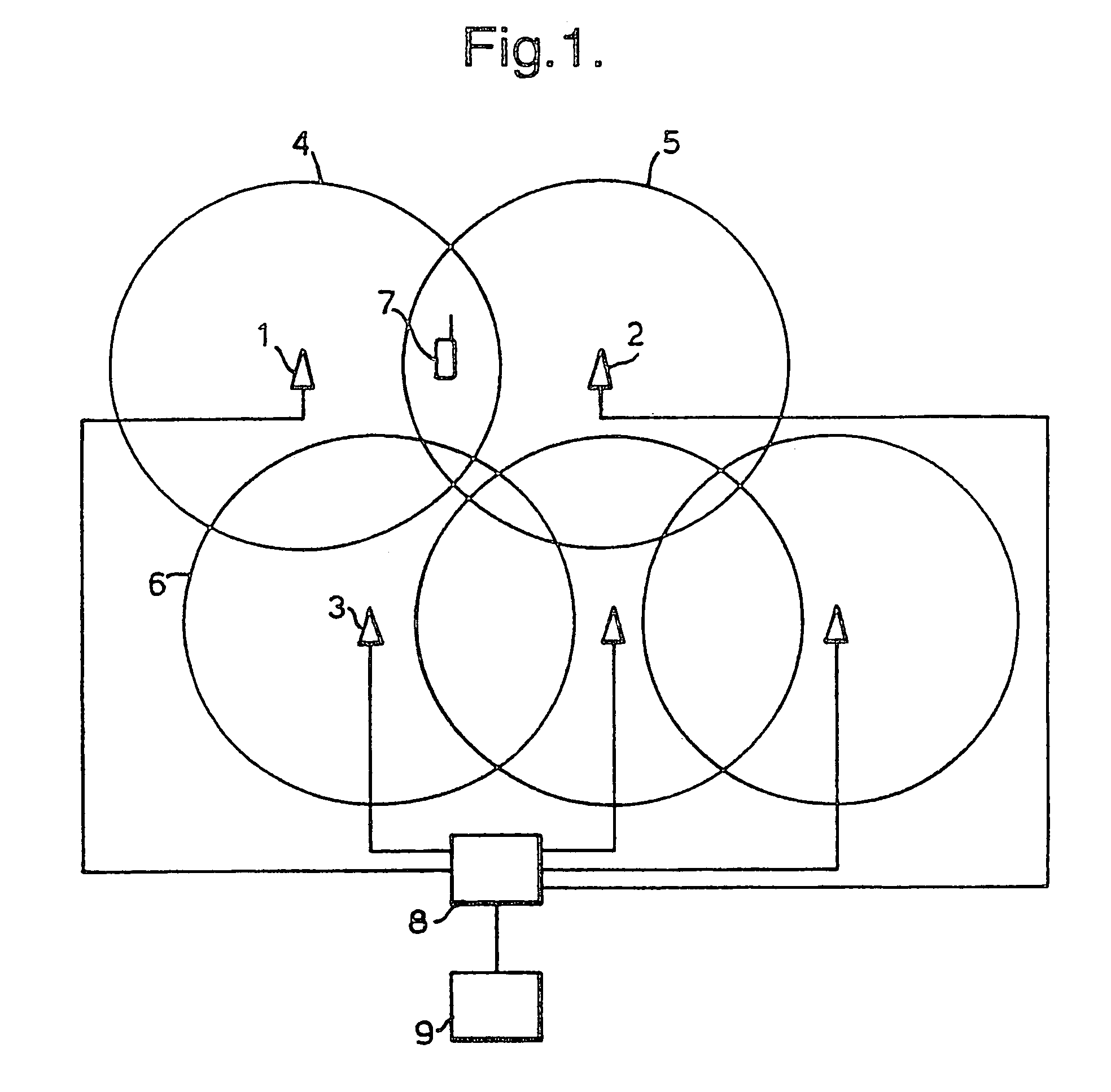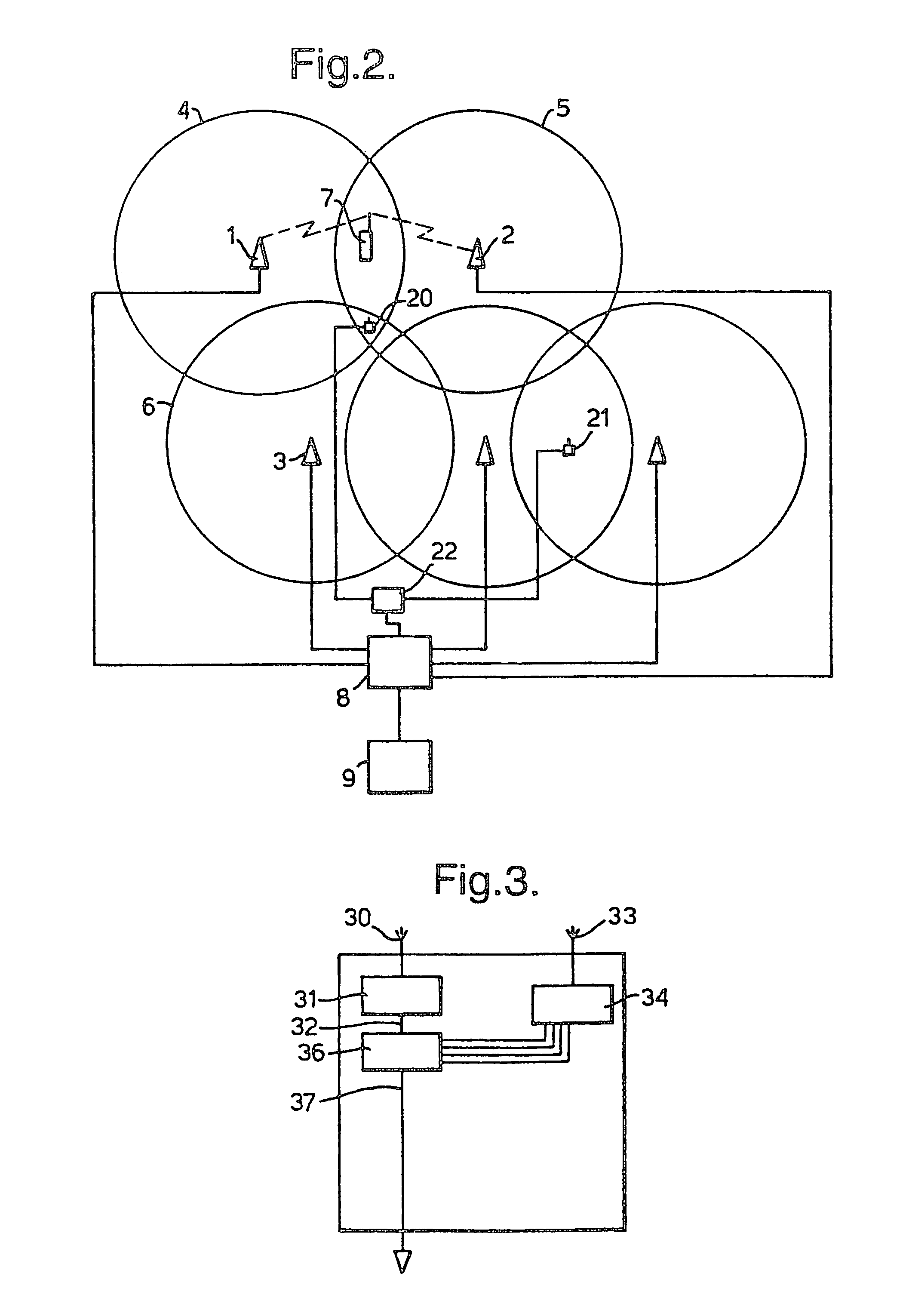Communication system
a communication system and communication technology, applied in the field of communication systems, can solve the problems of increasing the cost of mobile stations, increasing the power consumption of mobiles, and difficult deployment of base stations
- Summary
- Abstract
- Description
- Claims
- Application Information
AI Technical Summary
Benefits of technology
Problems solved by technology
Method used
Image
Examples
Embodiment Construction
[0030]As explained above, it is proposed that in the W-CDMA system base stations will only be synchronised to the superframe level (720 ms). The present example aims to improve on prior systems by collecting information on the timing differences between neighbouring base stations. This information is then transmitted to the mobile stations. With this information the mobile stations can quickly synchronise with and establish communication with a new base station without the need for a powerful synchronisation engine, or (since less searching of code-time space may be needed) faster (i.e. with reduced search time) and without the need to decode the BCCH of the new base station. Also, this performance improvement can be made without any need to tighten the synchronisation between base stations. Furthermore, as will be described below, the need for TX off slots in inter-frequency and inter-system measurements can be greatly reduced. These factors can potentially reduce the risk of bad q...
PUM
 Login to View More
Login to View More Abstract
Description
Claims
Application Information
 Login to View More
Login to View More - R&D
- Intellectual Property
- Life Sciences
- Materials
- Tech Scout
- Unparalleled Data Quality
- Higher Quality Content
- 60% Fewer Hallucinations
Browse by: Latest US Patents, China's latest patents, Technical Efficacy Thesaurus, Application Domain, Technology Topic, Popular Technical Reports.
© 2025 PatSnap. All rights reserved.Legal|Privacy policy|Modern Slavery Act Transparency Statement|Sitemap|About US| Contact US: help@patsnap.com



